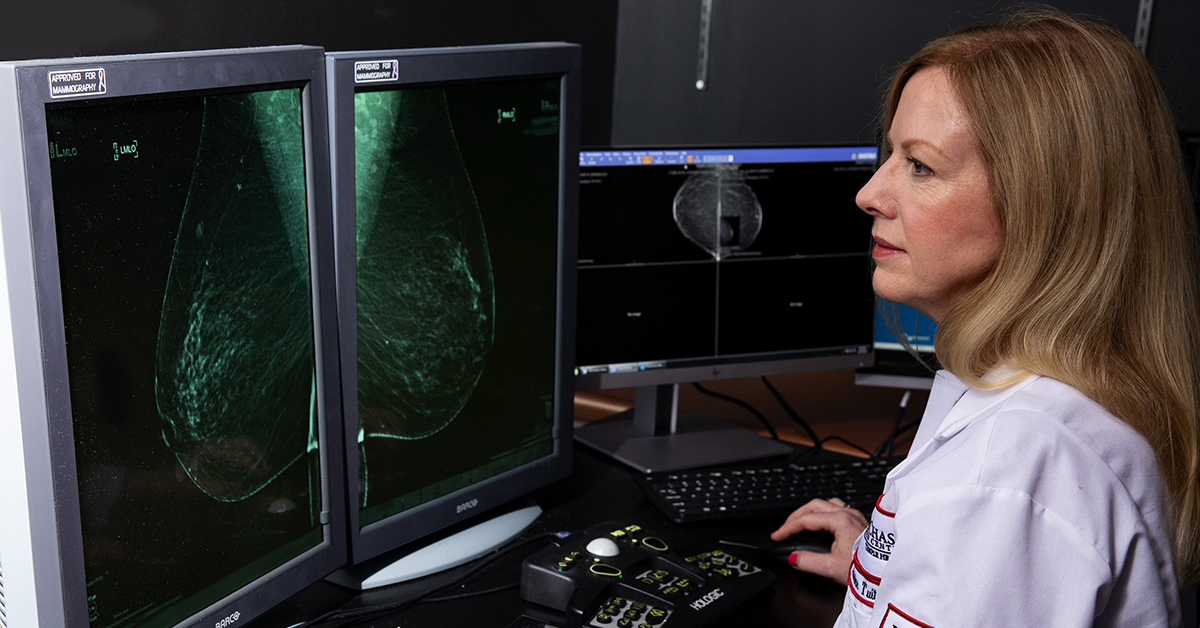
Why is Breast Cancer Awareness so Important?
-
Every October, you likely see a wealth of information about breast cancer. And that is a good thing. Awareness surrounding breast cancer is incredibly important as early detection, often through screening, can catch the disease when it is most treatable.
According to the American Cancer Society (ACS), breast cancer is the most common cancer in American women, except for skin cancers. The average risk of a woman in the U.S. developing breast cancer sometime in her life is about 12%, or a 1 in 8 chance. The chance that a woman will die from breast cancer is about 2.6%, or a 1 in 38 chance.
“Patients are experiencing better outcomes as a result of early diagnosis, state-of-the-art treatment options, and less extensive surgery,” said Catherine Tuite, MD, Section Chief of Breast Radiology and Associate Professor of Diagnostic Imaging at Fox Chase Cancer Center.
Today, there are more than 3.1 million breast cancer survivors in the U.S., including women still being treated and those who have finished treatment. “A heightened awareness of the disease has unquestionably led to a greater number of women being screened for breast cancer,” said Tuite. “Patients are experiencing better outcomes as a result of early diagnosis, state-of-the-art treatment options and less extensive surgery.”
What Are Some Signs and Symptoms of Breast Cancer?
Every woman should know how her breasts normally look and feel, so she can recognize any changes that may occur. “While knowing what to look for is important, a woman should still get her regular mammograms and clinical breast exams, as these tests can help detect breast cancer before she even has symptoms,” said Tuite.
Signs of breast cancer may include:
- Lump in the breast or underarm (armpit)
- Swelling or thickening of all or part of the breast
- Dimpling or skin irritation of breast skin
- Localized, persistent breast pain
- Redness, scaliness or thickening of the nipple or breast skin
- Nipple discharge (other than breast milk)
- Any change in the size or shape of the breast
Breast Cancer Risk Factors
The main risk factors for breast cancer include being a woman and getting older (most breast cancers are found in women ages 55 and older). Uncontrollable factors that may increase risk include personal/family history, race, breast density and menstrual period history. In addition, having changes in certain breast cancer genes (BRCA1 and BRCA2) increases the risk of developing breast cancer.
Certain risk factors are lifestyle-related, including the use of birth control pills, hormone therapy after menopause, having children, drinking alcohol, being overweight or obese, and not being physically active. Having one or several risk factors does not mean a woman will develop breast cancer. “Women need to become familiar with all of the risk factors. For those they can control, they need to make smart lifestyle decisions that can lower the risk,” said Tuite.
To lower risk of breast cancer:
- Get to and stay at a healthy weight. Balance your food intake with physical activity to avoid excess weight gain.
- Be physically active. Every week, get at least 150 minutes of moderate intensity or 75 minutes of vigorous intensity activity (or a combination of these).
- Limit or avoid alcohol. The ACS recommends that women have no more than one alcoholic drink per day.
Breast Cancer Screening
Fox Chase Cancer Center follows breast cancer screening guidelines set forth by the American College of Radiology (ACR) and Society of Breast Imaging (SBI).
- All women should have a risk assessment at age 30 to see if screening earlier than age 40 is needed.
- Women at average breast cancer risk should begin screening at age 40.
- Women previously diagnosed with breast cancer may also benefit from supplemental screening with magnetic resonance imaging (MRI), especially if their cancer was diagnosed at or before the age of 50.
“Three tests are typically used in detecting breast cancer. Each has its own benefits and risks. Women should talk with their doctor regarding the best option for them,” said Tuite.
- A mammogram is an X-ray exam of the breast used to detect and evaluate breast changes. Its detection ability depends on tumor size and breast tissue density. Three-dimensional (3D) mammography is a type of digital mammography in which X-ray machines are used to take pictures of thin slices of the breast from different angles and computer software is used to reconstruct an image.
- Breast ultrasound is often used along with mammography for high-risk women who cannot undergo MRI, and women with dense breast tissue.
- A breast MRI (magnetic resonance imaging) may be used to screen high-risk women and gather more information about a suspicious area found on a mammogram or an ultrasound.
Fox Chase Cancer Center offers a Risk Assessment Program for individuals and families concerned about their risk for certain types of cancer. Learn more.
